Scan for Trees
Returning digitized documents
to the Earth
as trees
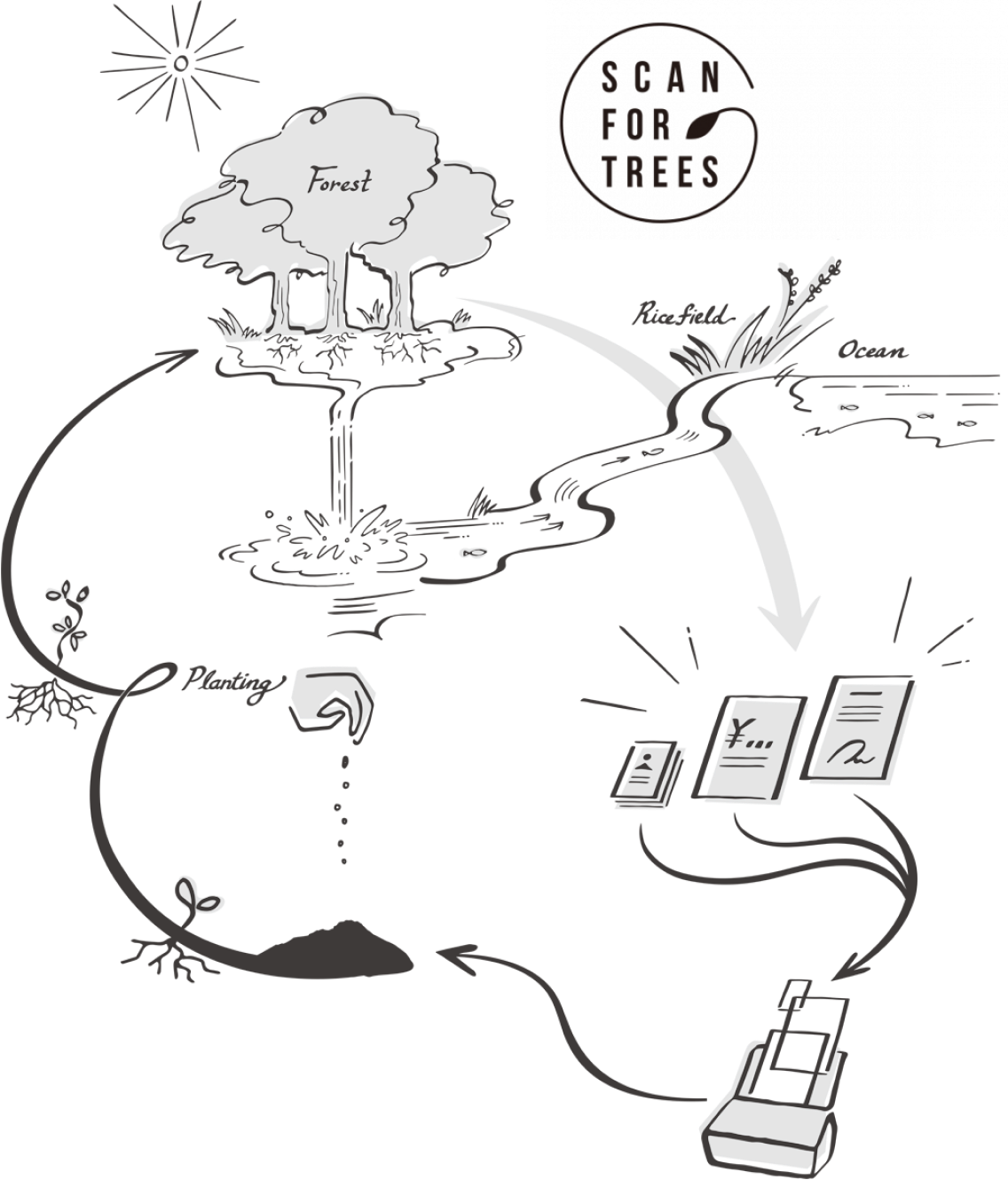
Creating new forests helps the rivers,
downstream fishing, and rice paddies.
Scan for Trees supports recovery and regeneration
of disaster-affected areas.
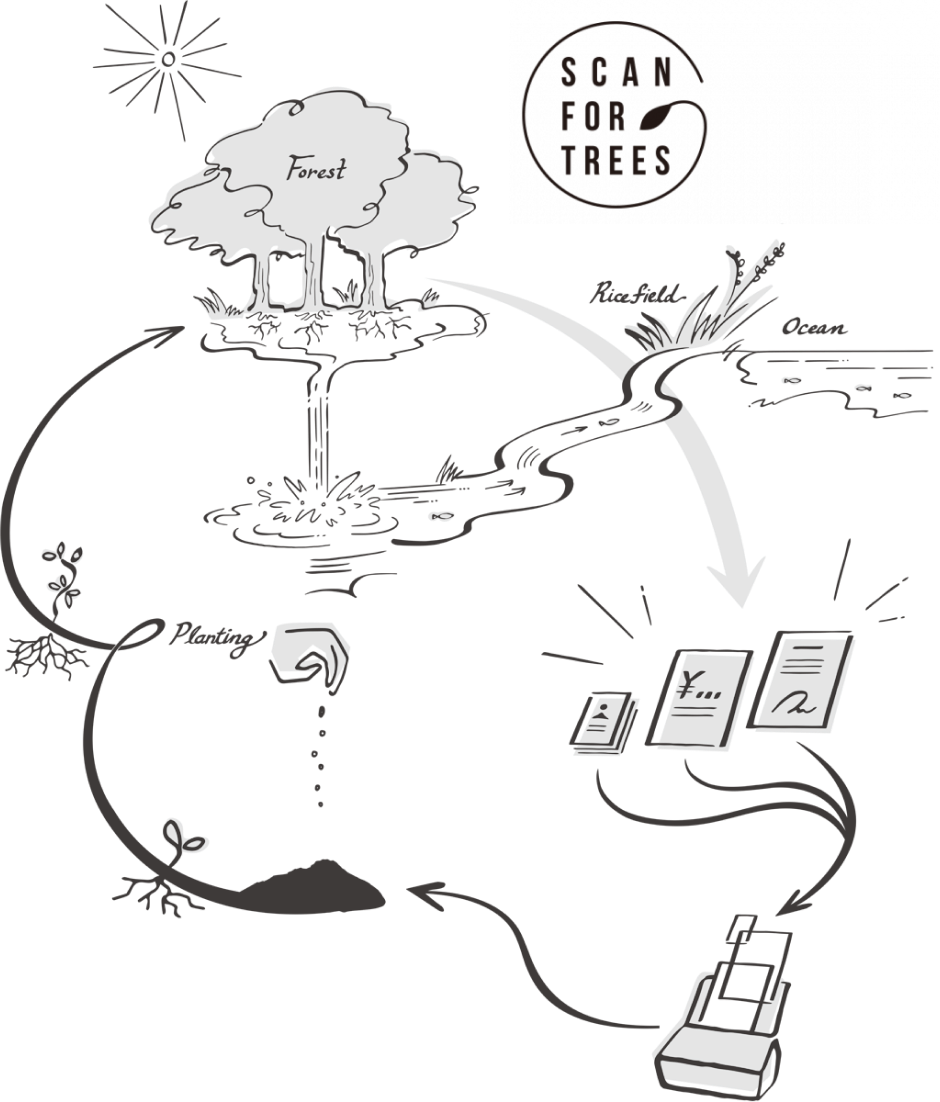
About Scan for Trees
Paper-based business cards, invoices,
and contracts are made from trees.
So, with Scan for Trees, every time the total number
of digitized documents equals the paper
produced from one tree,
we plant a tree in an area of need.
Through this initiative, use of Sansan services
reinforces the forests, water,
and the overall natural environment.
Applicable services
Sansan
Bill One
Contract One
How many trees we’ve planted
From June 2016 to Novembe 2025
22,153
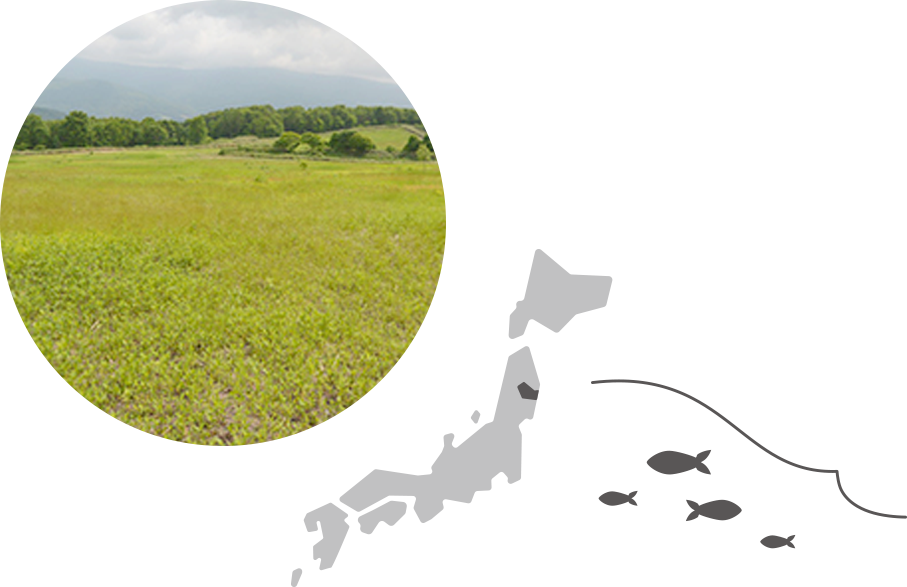
June 2016
Tree planting starts in Miyako City, Iwate Prefecture
Using the “Present Tree” method of the Japanese NPO Environmental Relations, we began planting trees at the Present Tree in Miyako plantation site in the Kawai district of Miyako City, Iwate Prefecture, in northeastern Japan.
The sea off of Miyako is one of the best fishing grounds in the world, but the Great East Japan Earthquake dramatically damaged it. The Kawai area is close to the water source of the Hei River, which is famous for its salmon run. The forest created by planting trees sends pure water into the sea, helping regenerate this rich fishing region.
July 2018
Tree planting completed in Miyako City, Iwate Prefecture
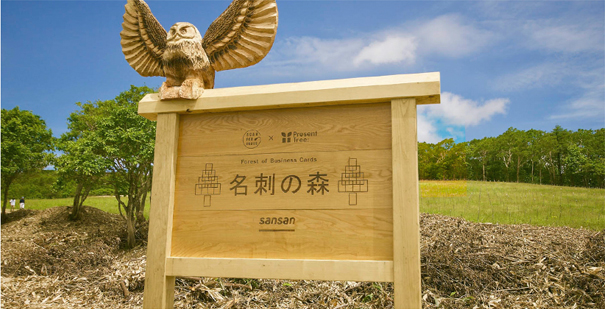
We planted 2,542 trees over 2 years.
To commemorate the end of our planting, a signboard was put up for Meishi no mori (Business Card Forest). With the growth of these trees, we can look forward to revitalization of the Sanriku area’s fishing grounds.
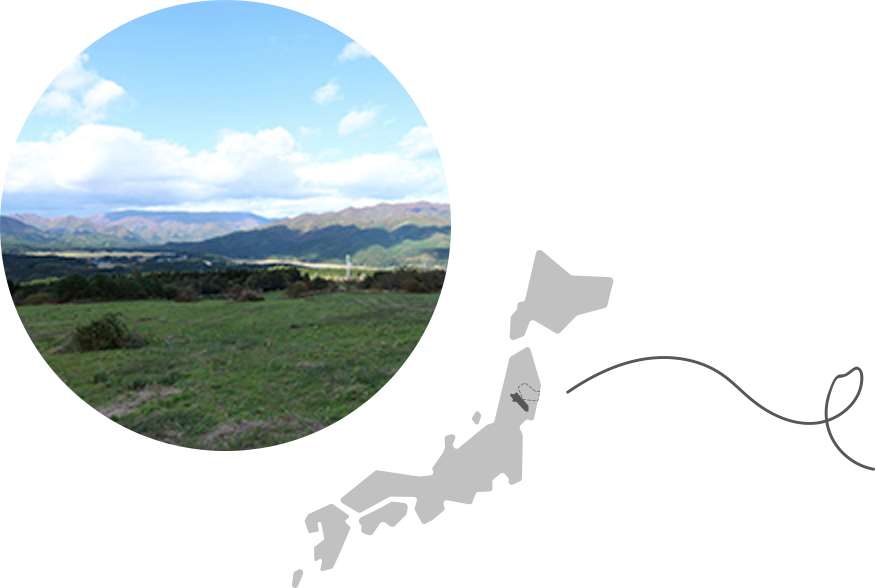
October 2019
Tree planting starts in Osaki City, Miyagi Prefecture
The next planting site was Present Tree in Miyagi Osaki, in Osaki City, Miyagi Prefecture, also in northeastern Japan.
In this region, farmers have increasingly been giving up raising of livestock because of the damaging effects of the Great East Japan Earthquake and the nuclear accident. In line with this, the need for pasture land is decreasing.
By planting trees in no-longer-used grasslands, we can support rice cultivation and creation of natural life in the lower reaches of the Arao and Eai Rivers, and on a greater level, support recovery from the disasters.
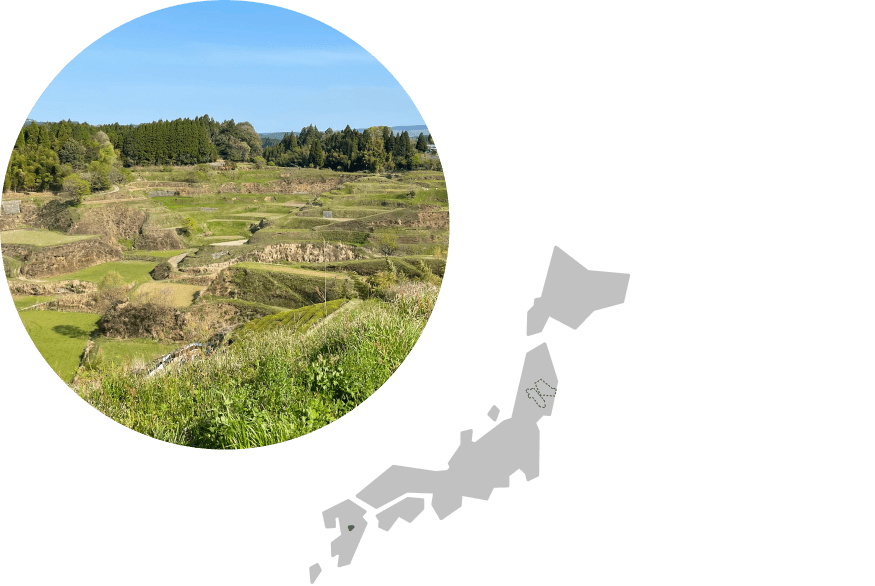
October 2020
Tree planting starts in Yamato Town, Kumamoto Prefecture
Yamato Town, located in central Kyushu and known as the “navel/center of Kyushu,” is considered the birthplace of organic farming in Japan. It features beautiful terraced rice fields and a diverse ecosystem. The town’s symbol, Tsujunkyo Bridge, built in the Edo period, was designated a national treasure in 2023 and still delivers clear water to the Shiraito plateau’s terraced fields.
We’ve planted native broadleaf trees on cedar logging sites to restore the original forest and protect the terraced landscape and biodiversity.
Tree-planting activity reports
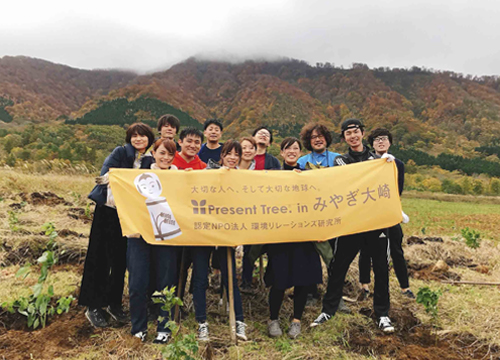
October 26–27, 2019
12 participants
Trees planted: 300
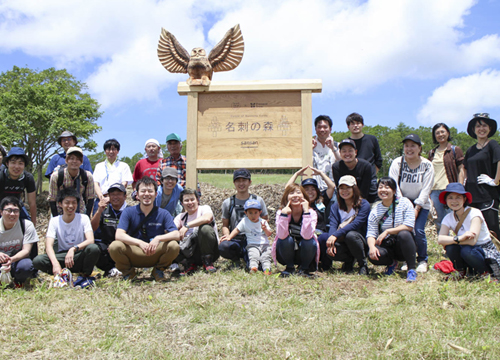
June 30 to July 1, 2018
19 participants
Trees planted: 200
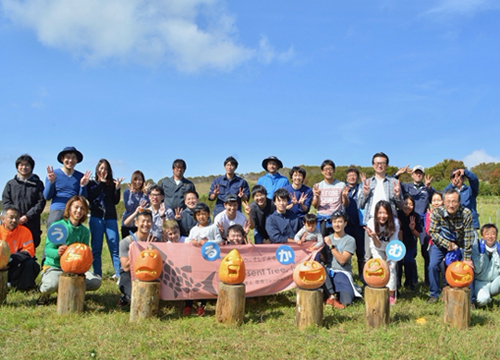
September 30 to October 1, 2017
19 participants
Trees planted: 200

The Present Tree project was developed by the NPO Environmental Relations to support regeneration of forests and promotion of surrounding areas. Scan for Trees plants trees through this project.